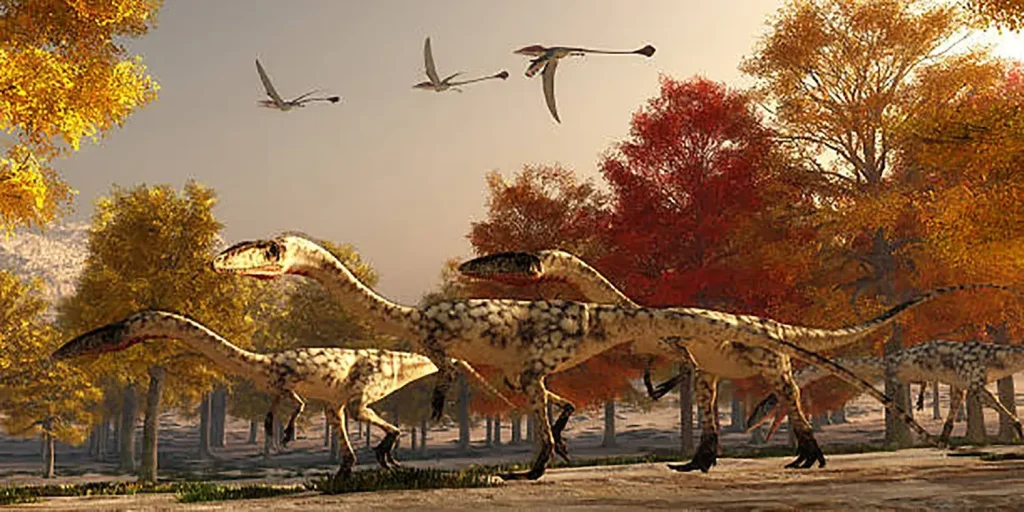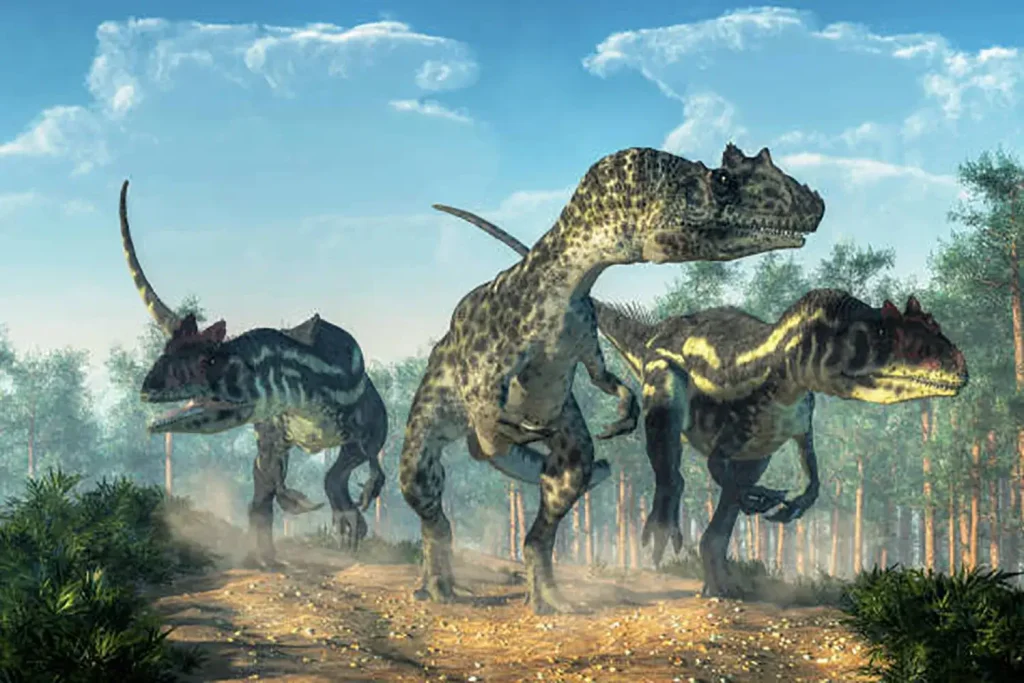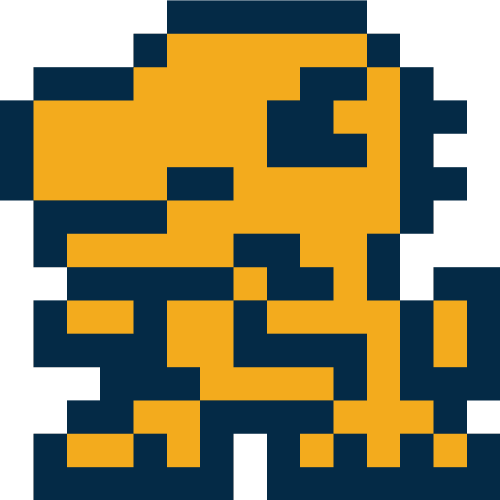The Mystery of Dinosaur Success and Gigantism: The Astonishing Secrets That Ruled for 160 Million Years.

Why Did Dinosaurs Thrive? Environmental Change and Water Conservation
Dinosaurs first appeared in the Late Triassic period as small animals that largely lived in the shadows.
What is the secret behind their explosive diversification and 160 million years of success?
When dinosaurs first appeared, the ecological niches for large land animals were already filled by creatures related to crocodiles and mammals.
It is believed that these animals required large amounts of drinking water due to their circulatory system structure.
As the Earth became progressively drier in the Late Triassic, these larger animals were forced to retreat from the land.
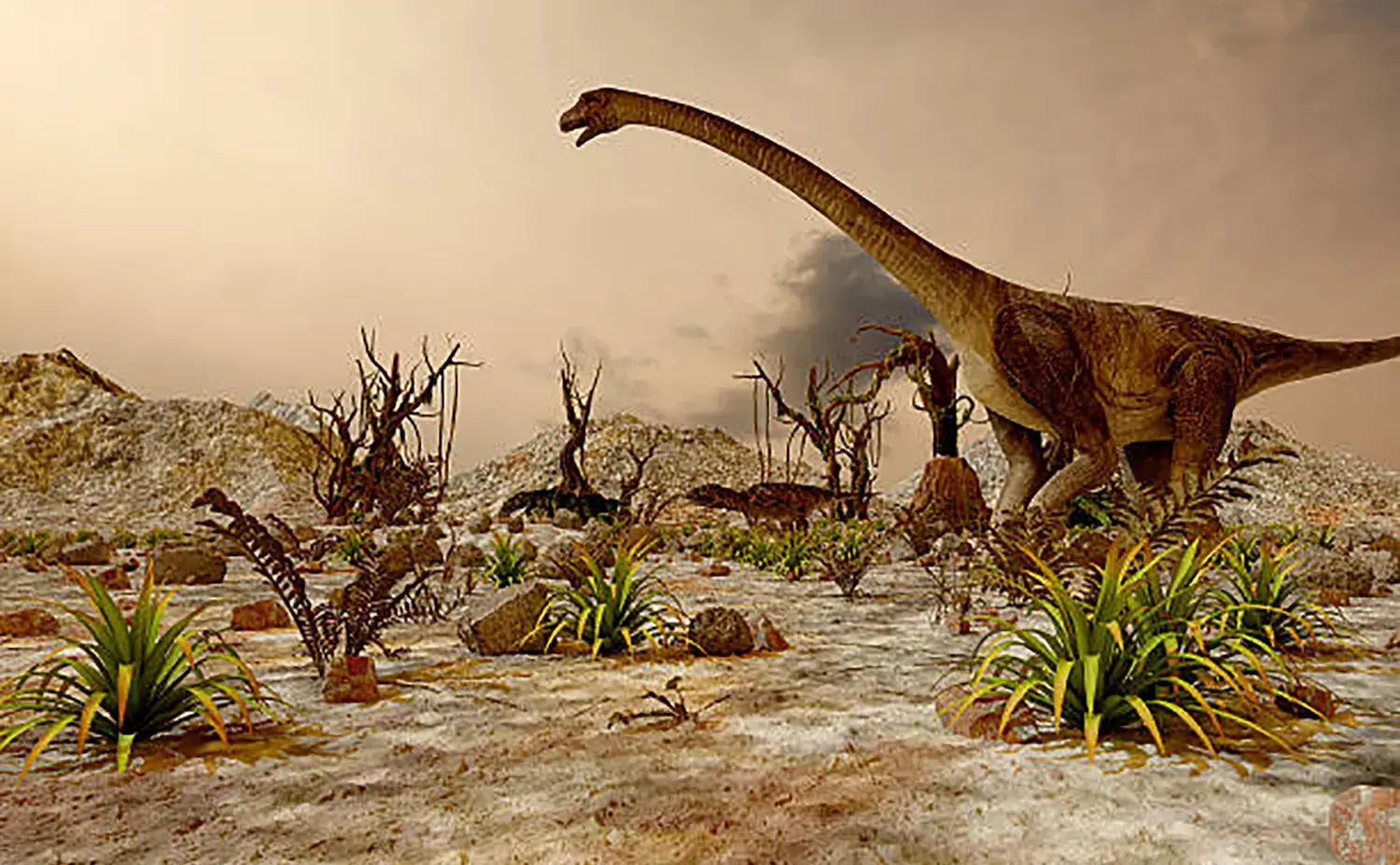
The Earth during the Late Triassic period
In contrast, “birds”—the modern descendants of dinosaurs—are water-efficient animals that do not require excessive amounts of water and excrete solid, white urine.
It is believed that dinosaurs shared this same unglamorous but extremely vital trait of “producing very little urine,” which was the biggest factor that allowed them to win the survival competition in a drying environment.
Furthermore, during the Jurassic period, when dinosaurs were most dominant, the atmospheric concentration of carbon dioxide reached 20 times the current level, and the Earth’s average temperature was more than 10 degrees Celsius warmer.
It is thought that this warmth encouraged the growth of plants, providing an abundant food supply that contributed to the dinosaurs’ prosperity.
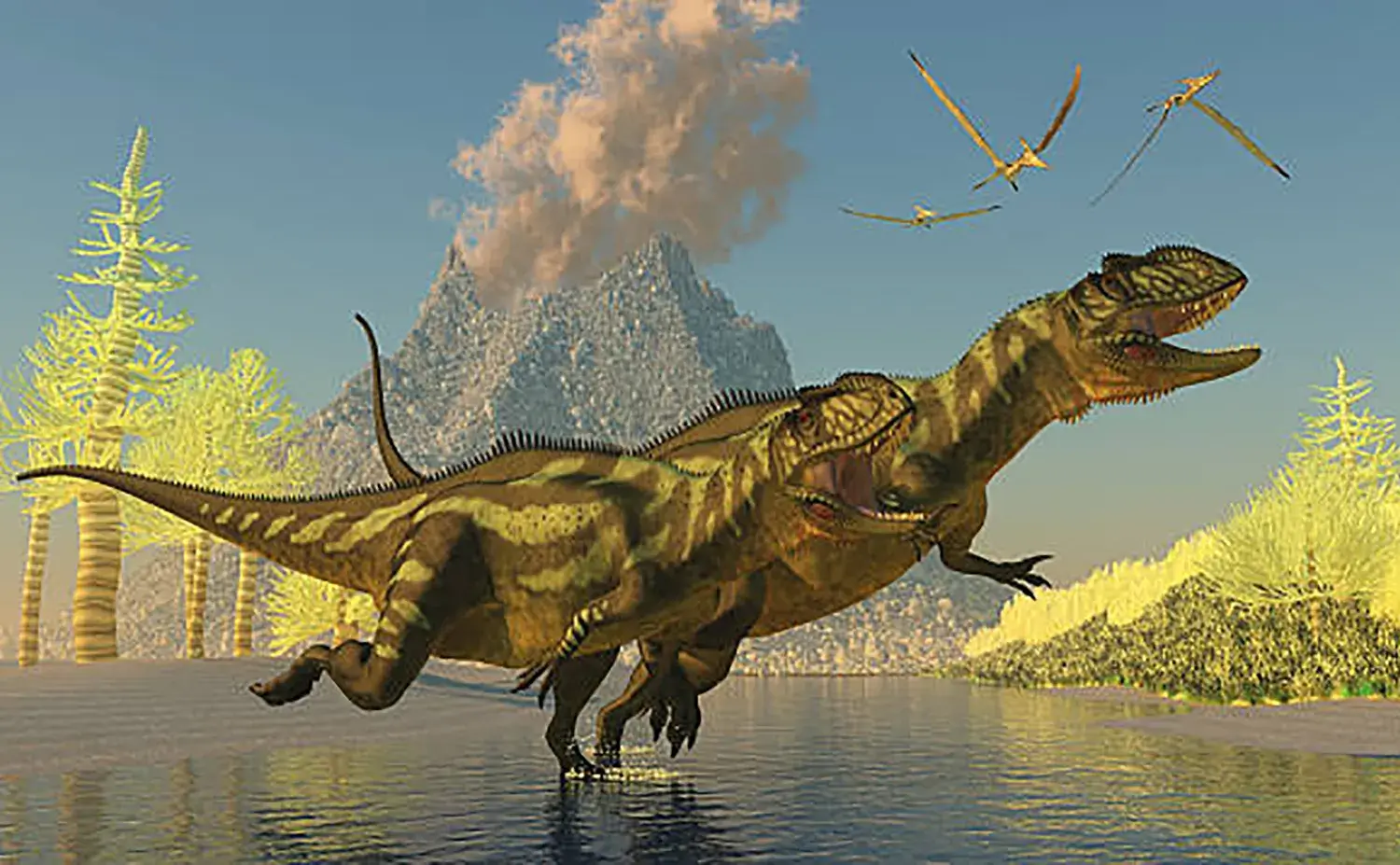
The Earth’s average temperature was high
Why Did Dinosaurs Become So Big? 6 Astonishing Reasons
The reasons dinosaurs attained gigantic sizes throughout their period of success were a combination of multiple, intertwined factors.
1. Skeletal Structure Suited for Gigantism
From their very beginning, dinosaurs possessed an upright-walking posture with long, sturdy hind limbs extending directly beneath their torso.
Unlike the sprawling posture of other reptiles, this structure was ideal for efficiently supporting a heavy body.
The fact that the earliest dinosaurs (like Eoraptor) could run at high speeds confirms a skeleton that could “withstand loads,” fulfilling the necessary conditions for later evolution into giant herbivores.
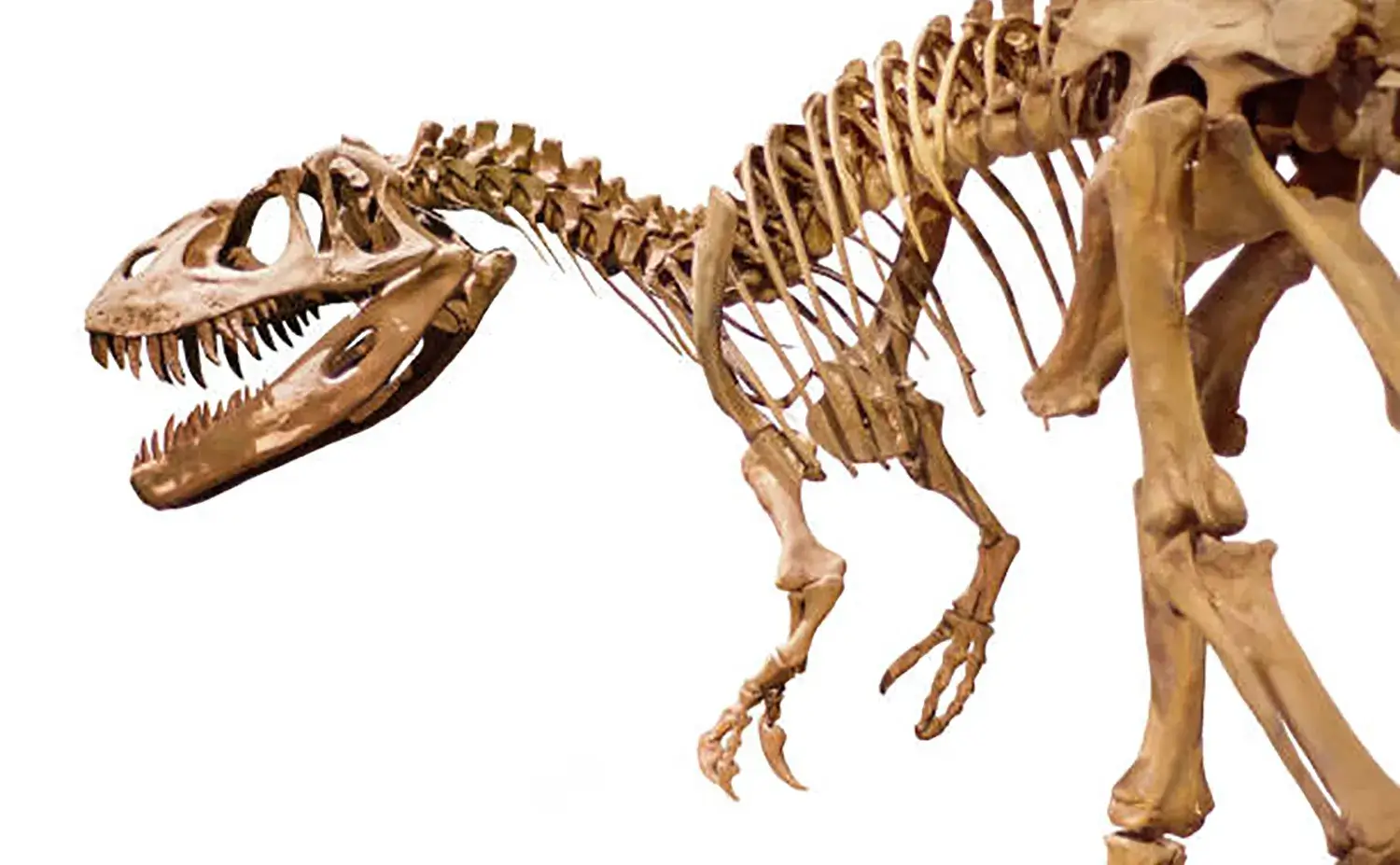
Skeletal structure suited for gigantism
2. Development of a Super-Efficient Respiratory System (“Air Sacs”)
Dinosaurs had a system of “air sacs” (pneumatic structures) spread throughout their bodies, which served as auxiliary organs for the lungs, allowing for highly efficient oxygen intake.
The superior development of these air sacs, far surpassing those of crocodiles and monitor lizards, enabled a sufficient supply of oxygen to their giant bodies.
Air sacs also had the added benefits of keeping the body lightweight and increasing bone strength.
Furthermore, this smooth gas exchange not only supported their gigantism but was also deeply involved in their later expansion into the air—the evolution of birds.
3. The Characteristic of Growing Throughout Their Lives
Analysis of fossils shows that, unlike mammals, dinosaurs—like their reptile relatives—possessed the characteristic of continuing to grow as long as they lived.
This indeterminate growth was another factor contributing to their immense size.
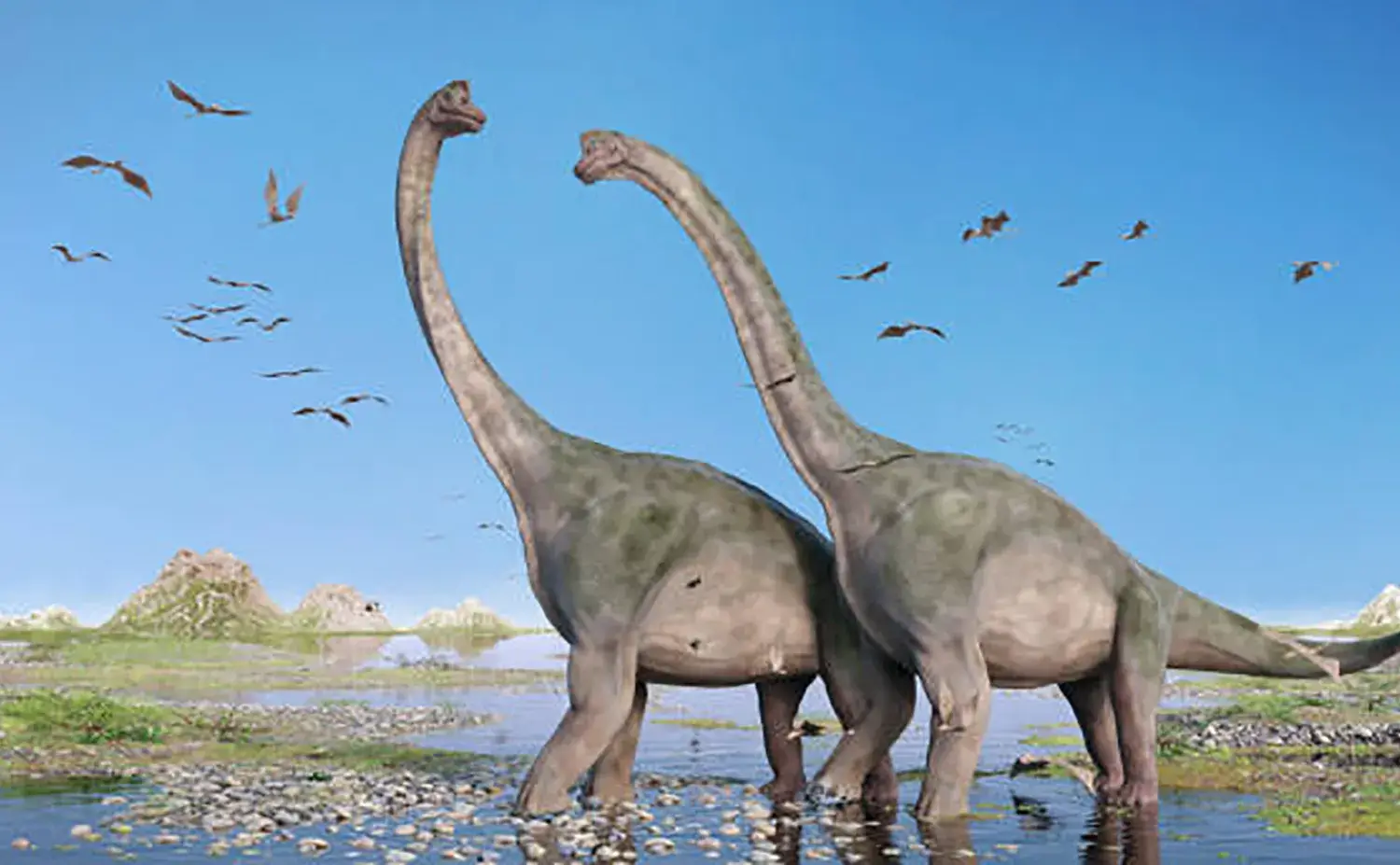
Dinosaurs continued to grow throughout their entire lives
4. Abundant Food Environment
The warm climate provided vast amounts of plant life, making it possible for dinosaurs to consume large quantities of food.
However, because the nutritional value of plants per volume was extremely low, many herbivorous dinosaurs were required to eat enormous amounts to survive, which is also thought to have resulted in their massive size.
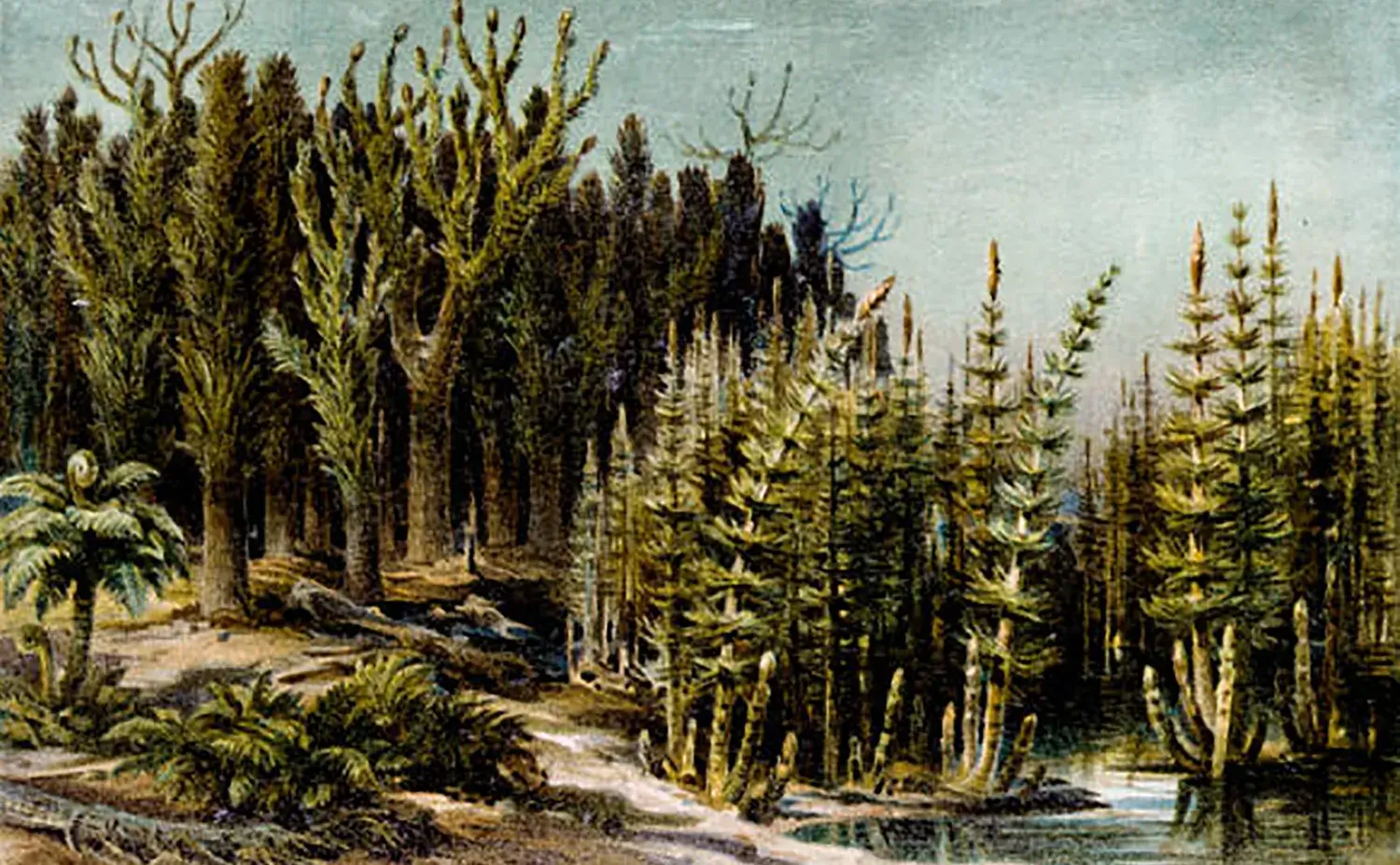
Food was abundant at the time
5. Defense Strategy Against Predators
Growing to a certain size provided a significant defensive advantage: it made them harder for predators to take down.
This strategy of minimizing enemies may have driven them to achieve ever-greater size.
Ironically, this, in turn, fueled the gigantism of the creatures that preyed on them (the carnivorous dinosaurs).
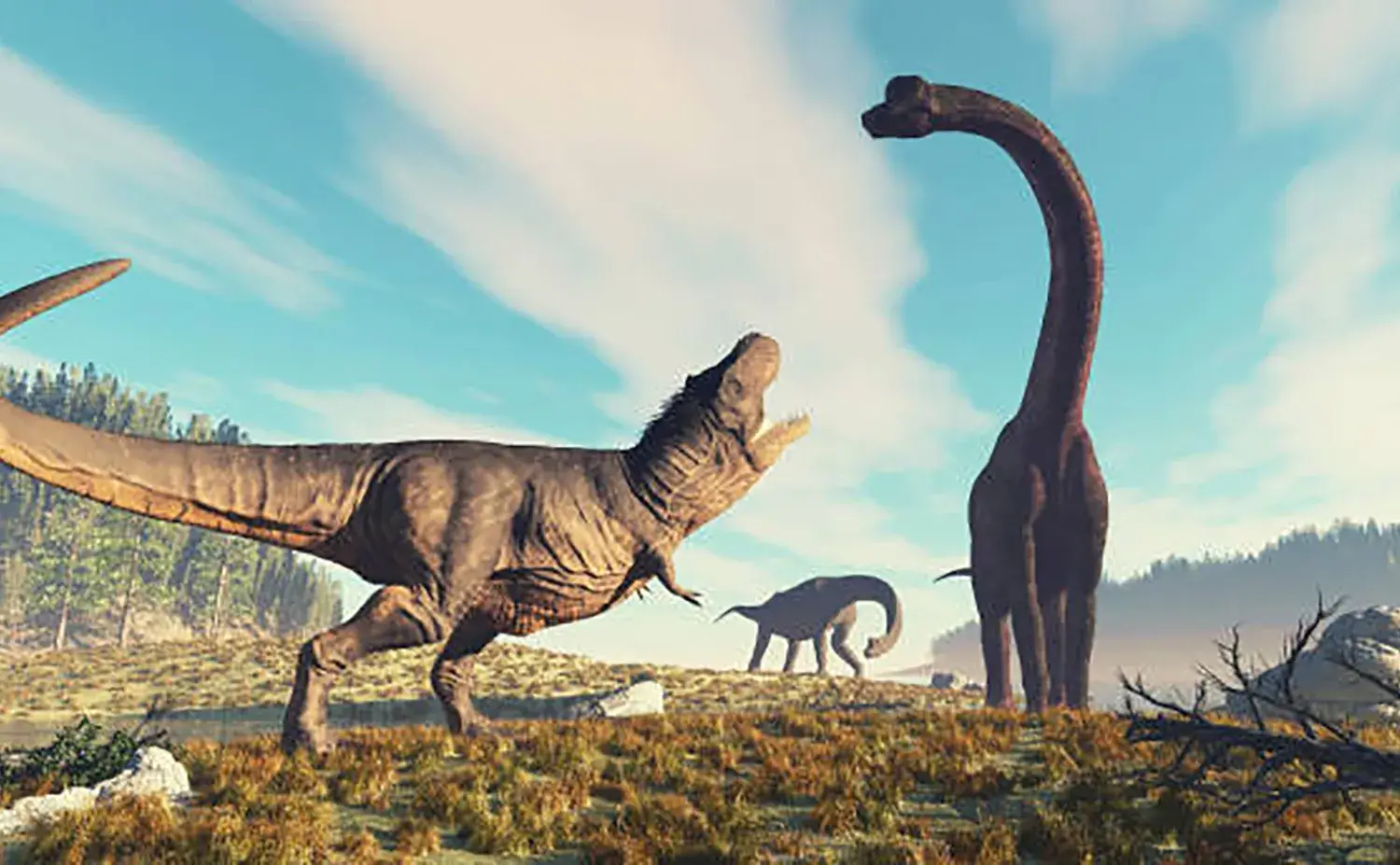
They grew larger to protect themselves from predators.
6. The Evolutionary Path of Failing to Miniaturize
While many dinosaurs were smaller than humans, very few species as small as a mouse are known in adulthood.
It is speculated that dinosaurs “failed to miniaturize” because mammals and their ancestors had already adapted to and occupied the niche of small, active animals.
Some dinosaurs, having had their path to small size blocked, sought survival by pursuing gigantism.
